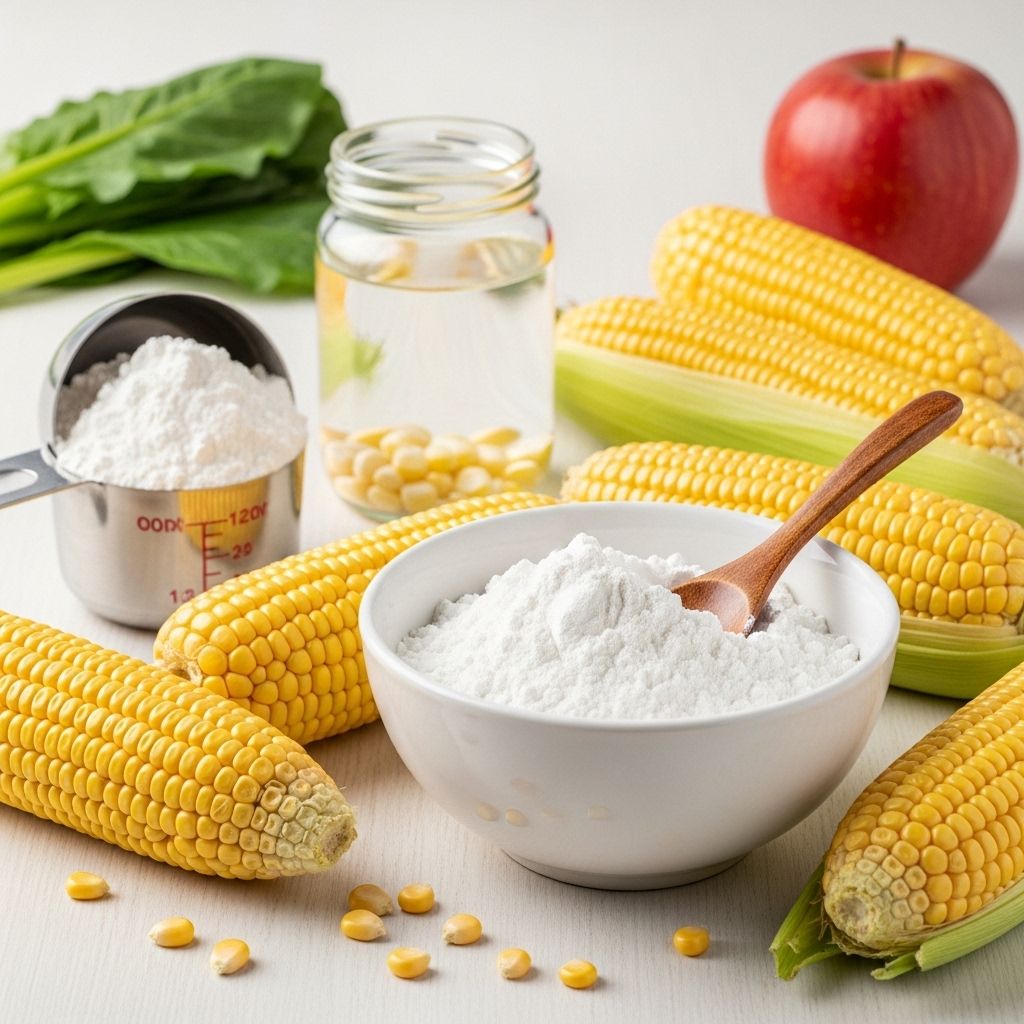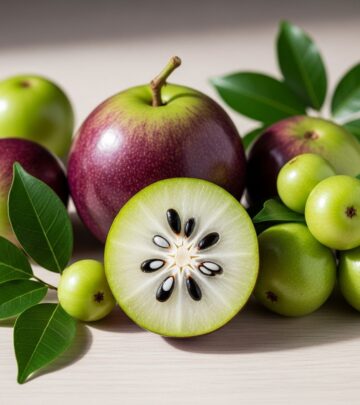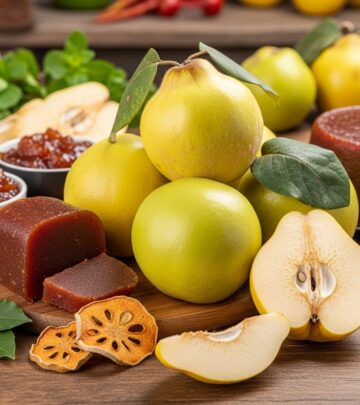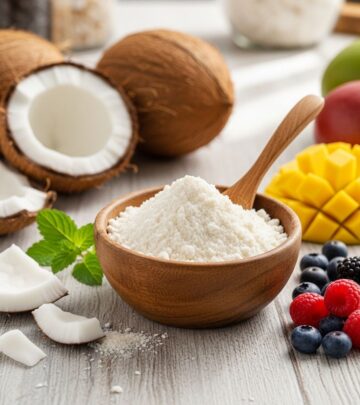Is Cornstarch Bad for You? Nutrition, Benefits & Health Risks Explained
Everyday powder enhances textures but may test blood sugar balance and heart health.

Cornstarch is a popular thickening agent used in everything from soups, stews, and sauces to baked goods and desserts. Made by extracting the starchy part of corn kernels, this fine, flavorless powder is a kitchen staple. However, despite its versatility, many people wonder whether cornstarch is good or bad for your health. In this article, we explore the nutritional content, benefits, risks, and best practices for using cornstarch in your diet.
What Is Cornstarch?
Cornstarch is a white, powdery substance derived from the endosperm of corn kernels. It is processed to remove proteins and fiber, leaving behind a pure carbohydrate product composed mainly of rapidly digestible starches.
Cornstarch is virtually tasteless and odorless, making it ideal for thickening and stabilizing foods without altering flavor.
Nutritional Profile of Cornstarch
While cornstarch serves a useful culinary role, its nutrition leaves much to be desired. Below is a typical nutritional breakdown for cornstarch per one cup (about 128 grams):
| Nutrient | Amount per 1 cup (128g) | % Daily Value (DV) |
|---|---|---|
| Calories | 488 | ~24% |
| Carbohydrates | 117g | 40% |
| Fiber | 1g | 4% |
| Protein | 0.5g | 1% |
| Copper | 7% | DV |
| Selenium | 7% | DV |
| Iron | 3% | DV |
| Manganese | 3% | DV |
Note: Actual usage in recipes is typically 1–2 tablespoons (8–16 grams), much less than the above, though even small portions are almost entirely made up of quickly digested carbohydrates.
Cornstarch in Cooking
Cornstarch is valued for its ability to thicken and stabilize foods. Typical uses include:
- Thickening soups, stews, and gravies
- Stabilizing pie fillings or fruit sauces
- Adding crispness to fried foods or baked items
- Softening textures in baked goods
Because cornstarch is nearly flavorless, it does not alter the taste of dishes but instead improves texture, consistency, and appearance.
Health Benefits of Cornstarch
- Gluten-Free: Cornstarch does not contain gluten, making it safe for individuals with celiac disease and non-celiac gluten sensitivity. This is an advantage over wheat flour and other gluten-containing thickeners.
- Small Fiber Contribution: Although cornstarch is low in fiber, it provides a minor amount which may help supplement a fiber-poor diet.
- Medical Uses: Cornstarch plays a special role in managing metabolic diseases such as glycogen storage disease, where slow-release glucose is needed to prevent dangerous blood sugar drops. In such cases, cornstarch helps patients maintain blood glucose for longer periods, including overnight.
- Convenience: Cornstarch’s thickening power and versatility support various food preparations.
Potential Health Risks and Drawbacks of Cornstarch
Despite its usefulness, regular or excessive consumption of cornstarch may carry several health concerns:
May Increase Blood Sugar Levels
- Cornstarch is made up almost entirely of rapidly digestible starch with a high glycemic index (GI), meaning it causes blood sugar levels to spike quickly after consumption.
- Low in fiber, cornstarch is digested quickly, making it poor at slowing glucose absorption into the bloodstream.
- Those with type 2 diabetes, prediabetes, or impaired insulin sensitivity should especially avoid regular high intakes of cornstarch, as it can interfere with blood sugar control.
May Harm Heart Health
- Cornstarch is a refined carbohydrate, produced by stripping corn of nutrients such as protein, fiber, and micronutrients.
- Regularly consuming refined carbs and high-GI foods has been linked to a greater risk of:
- Obesity
- Coronary heart disease
- Type 2 diabetes
- High blood pressure
- Elevated triglycerides
- Lowered HDL (‘good’) cholesterol
- For optimal heart health, diets focusing on unprocessed carbohydrates and whole grains are encouraged over refined starches like cornstarch.
Lacks Essential Nutrients
- Apart from providing calories and carbohydrates, cornstarch offers very little protein, fiber, vitamins, or minerals in routine serving sizes.
- Reliance on cornstarch for dietary staples can crowd out more nutrient-rich foods and reduce overall nutritional quality.
Who Should Avoid or Limit Cornstarch?
- People with type 2 diabetes or insulin resistance (cornstarch can spike blood sugar).
- Individuals following low-carbohydrate diets for heart disease prevention.
- Anyone wanting to lose weight, as high-GI carbs promote fat storage and appetite.
- Those trying to increase fiber, protein, or micronutrients via their diet (cornstarch is low in these).
A controlled amount in recipes is usually safe for healthy individuals, but should not form the bulk of one’s carbohydrate intake.
Cornstarch vs. Other Thickeners
| Thickener | Calories (per Tbsp) | Fiber (per Tbsp) | Gluten? | Glycemic Index |
|---|---|---|---|---|
| Cornstarch | 30 | 0.1g | No | High |
| Wheat Flour | 28 | 0.3g | Yes | Moderate |
| Arrowroot | 15 | 0.2g | No | Low |
| Potato Starch | 40 | 0.2g | No | High |
| Tapioca Starch | 35 | 0.1g | No | High |
Arrowroot and potato starch offer alternatives with lower glycemic index and, for arrowroot, slightly more fiber. Wheat flour contains gluten and has a moderate glycemic index, making it unsuitable for those with gluten intolerance.
How Is Cornstarch Used Medically?
While not generally recommended as a staple for healthy adults, cornstarch does have specific therapeutic roles, especially in:
- Glycogen Storage Disease: Cornstarch is used as a controlled, slow-release source of glucose to prevent hypoglycemia.
- Other Metabolic Disorders: Under medical guidance, it can help maintain blood glucose steady overnight or between meals for certain rare diseases.
These uses are carefully managed and not a recommendation for general dietary consumption.
Tips for Safe and Healthy Use of Cornstarch
- Use cornstarch only as needed for thickening recipes—avoid making it a major dietary carbohydrate source.
- Pair cornstarch-based dishes with fiber-rich, protein-rich, or micronutrient-dense foods to improve overall nutrition.
- If you are at risk for diabetes, obesity, or heart disease, minimize the use of cornstarch and opt for lower-glycemic alternatives where possible.
- For gluten-free thickening needs, consider alternatives such as arrowroot, potato starch, or tapioca, which may also offer lower glycemic index values.
Frequently Asked Questions (FAQs)
Q: Is cornstarch gluten-free?
A: Yes, pure cornstarch contains no gluten and is safe for individuals with celiac disease or gluten sensitivity.
Q: Does cornstarch provide any vitamins or minerals?
A: Cornstarch contains trace amounts of copper, selenium, iron, and manganese in large quantities, but routine serving sizes (1–2 Tbsp) offer negligible micronutrients.
Q: Can cornstarch cause weight gain?
A: Consumed in large quantities, especially in processed foods, cornstarch’s high-GI, calorie-dense profile may contribute to weight gain, insulin resistance, and increased fat storage.
Q: Is cornstarch safe for people with diabetes?
A: Cornstarch’s high glycemic index and lack of fiber mean it can spike blood sugar; those with type 2 diabetes or prediabetes should limit its use and seek lower-GI alternatives.
Q: What are healthier substitutes for cornstarch?
A: For thickening, arrowroot, potato starch, tapioca starch, and even pureed vegetables offer comparable alternatives with lower glycemic index and, in some cases, additional nutrients.
Q: Does cornstarch have any medical uses?
A: Yes, under medical supervision, cornstarch is used as a slow-release glucose source in metabolic disorders like glycogen storage disease, but these are special, non-generalized applications.
Q: Can I use cornstarch in a weight-loss diet?
A: While occasional use in recipes is acceptable, cornstarch’s high-calorie, low-nutrient profile makes it a poor choice as a dietary staple for weight loss.
Key Takeaways
- Cornstarch is a versatile, gluten-free thickener low in nutrients and high in calories and rapidly digestible starches.
- Excess consumption can spike blood sugar, increase risks for heart disease and obesity, and does not support balanced nutrition.
- Small, occasional amounts as used in cooking are generally safe for healthy individuals.
- Those with diabetes, heart concerns, or on low-carb diets should minimize intake and use better alternatives when possible.
- Medical uses for cornstarch exist but do not translate into benefits for the general population.
References
Read full bio of medha deb













